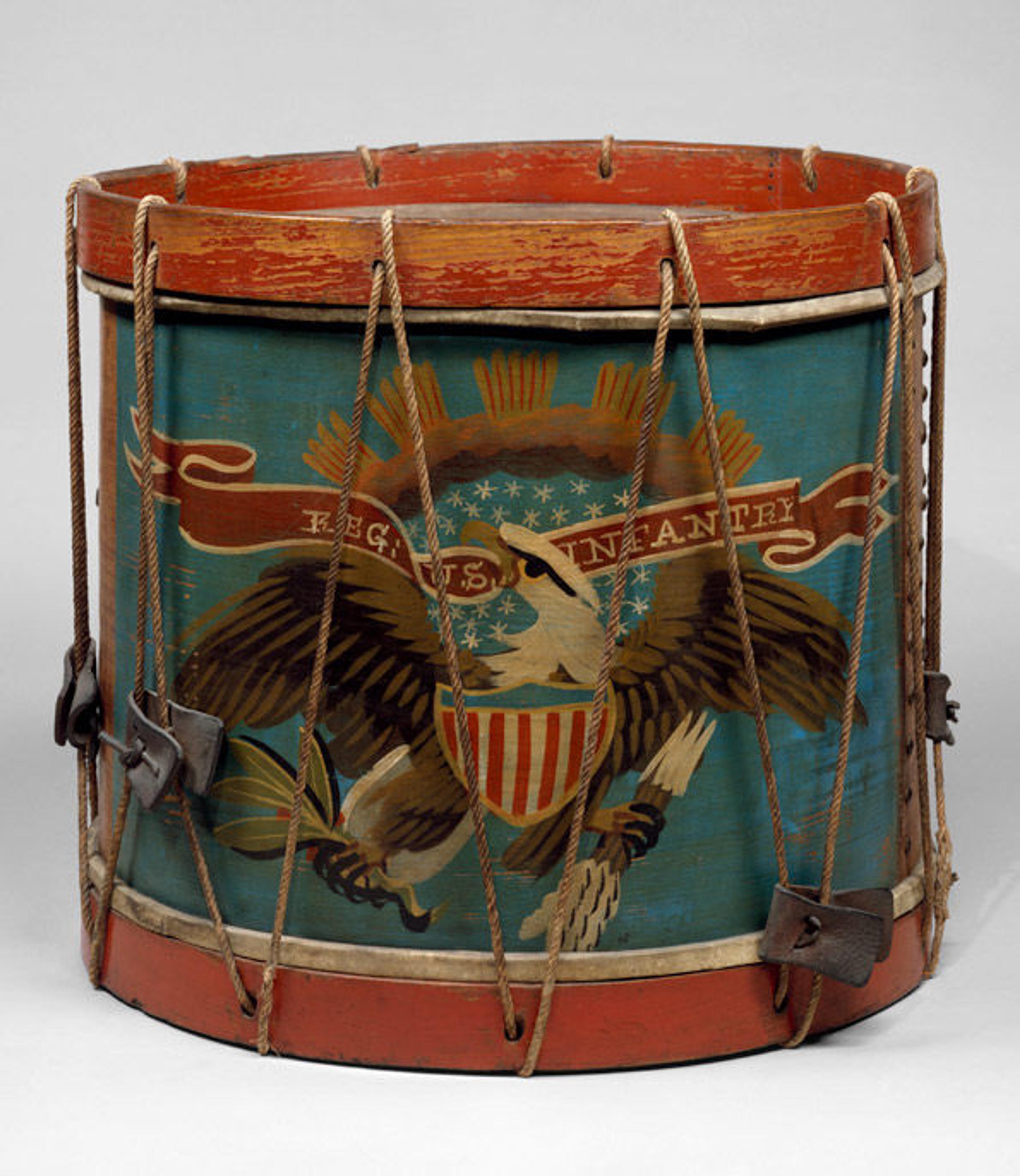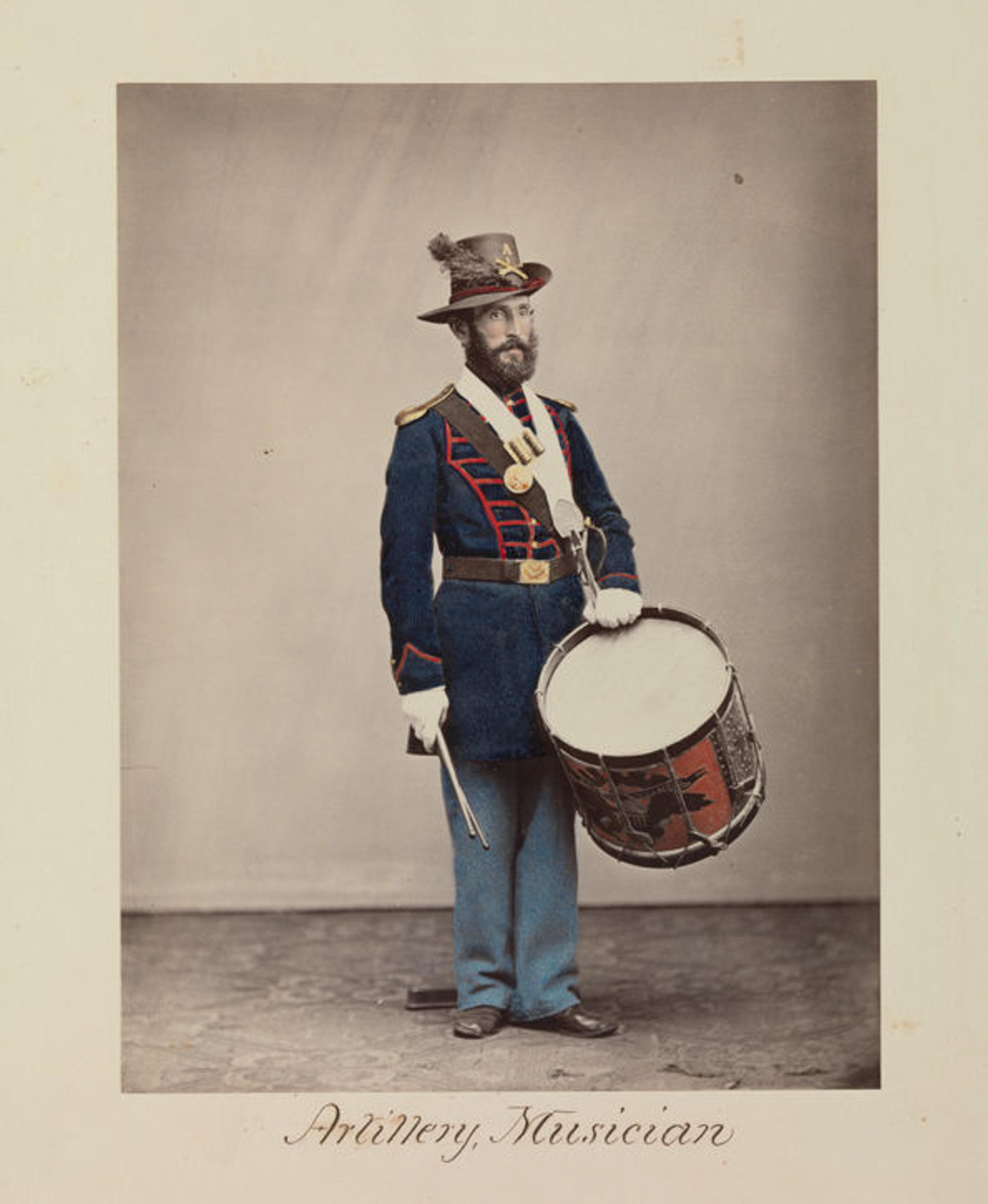
Attributed to Ernest Vogt (American). Side Drum, ca. 1864. Wood, calf skin, rope. The Metropolitan Museum of Art, New York, The Crosby Brown Collection of Musical Instruments, 1889 (89.4.2162)
«The side drum is probably the instrument most associated with important civic and patriotic holidays in the United States, including the Fourth of July. While drums of all types have been regularly employed to rouse the spirits of armies heading into battle, or to strike fear into their opponents, their most important function in warfare was as signal instruments that conveyed commands to dispersed troops. The side drum—named as such because it hangs on a sling to the player's side—was an important part of European military life from the fifteenth century through the nineteenth century, and is still used for ceremonial functions today. Throughout colonial times and the Federal period in the United States, the instrument was a common sight in towns and villages, as it was used to sound the alarm and to summon members of the local militia for mutual defense.»
Such instruments were used to great effect during the American Civil War, when hundreds of thousands of men were called to serve in the Union and Confederate Armies. Drums and fifes were a part of the field music used to communicate with Infantry troops not only during battle or while on the march, but individual signals were also developed for matters of daily life—notifying soldiers when to wake up, arrive for mess, retrieve mail, and turn their lights out for the evening.
The Metropolitan Museum of Art has a side drum in remarkable condition that was made for Infantry use during the American Civil War. The shell of the instrument is made of a single plank of hardwood, probably ash, which was heated in order to bend into a cylinder that was glued and reinforced with brass tacks. The drum has two heads made of calfskin: the top head (batter) is played with two sticks, while the bottom head (snare) head has several strands of thick gut cord that are stretched across it and rattle against the head when the drum is played.
The drum bears a stenciled eagle design that was typical of thousands of instruments produced for use by the Union Army. The eagle is painted on a blue field, which designated it for use in the Infantry (red was used for Artillery units), and a banner held in the eagle's beak bears the marking REG: U.S. INFANTRY.
This drum is rope-tensioned, with a rope that passes back and forth across the drum shell between two wooden hoops. Players adjust leather tugs, or "ears," to change the tension on the heads, which, in turn, alter the drumhead's pitch.

Attributed to Oliver H. Willard (American, active 1850s–70s, died 1875). Artillery, Musician, 1866. Albumen silver print from glass negative. The Metropolitan Museum of Art, New York, The Horace W. Goldsmith Foundation Fund, through Joyce and Robert Menschel, 2010 (2010.35)
Follow Jayson on Twitter: @JayKerrDobney